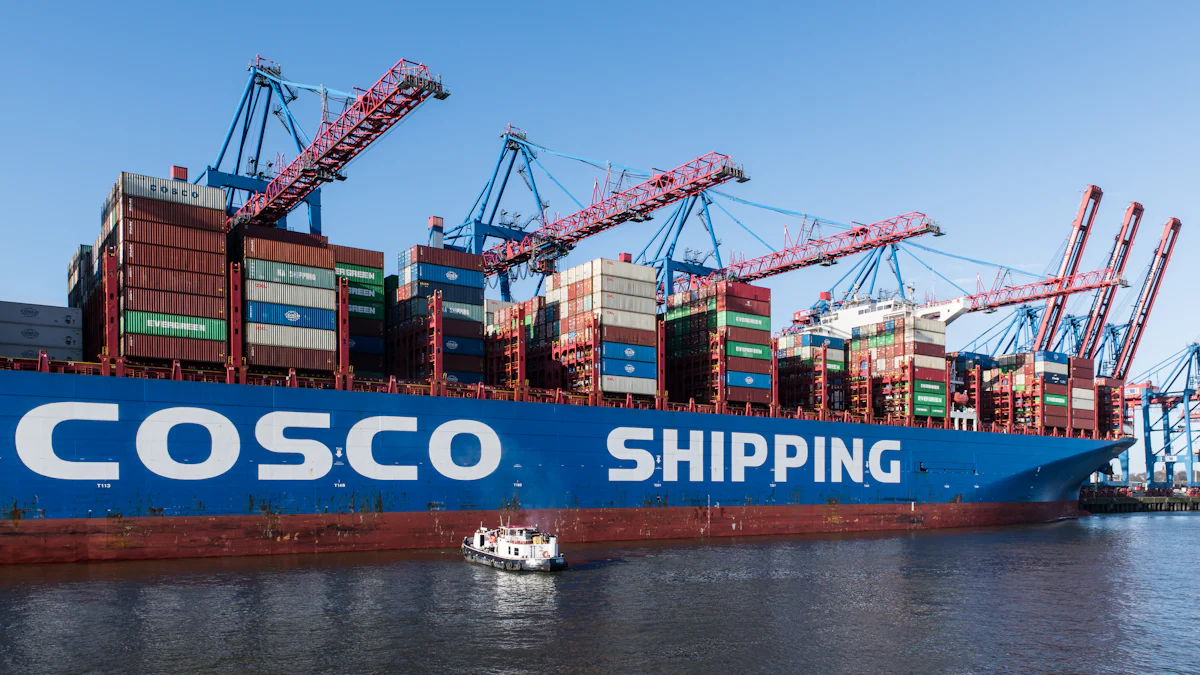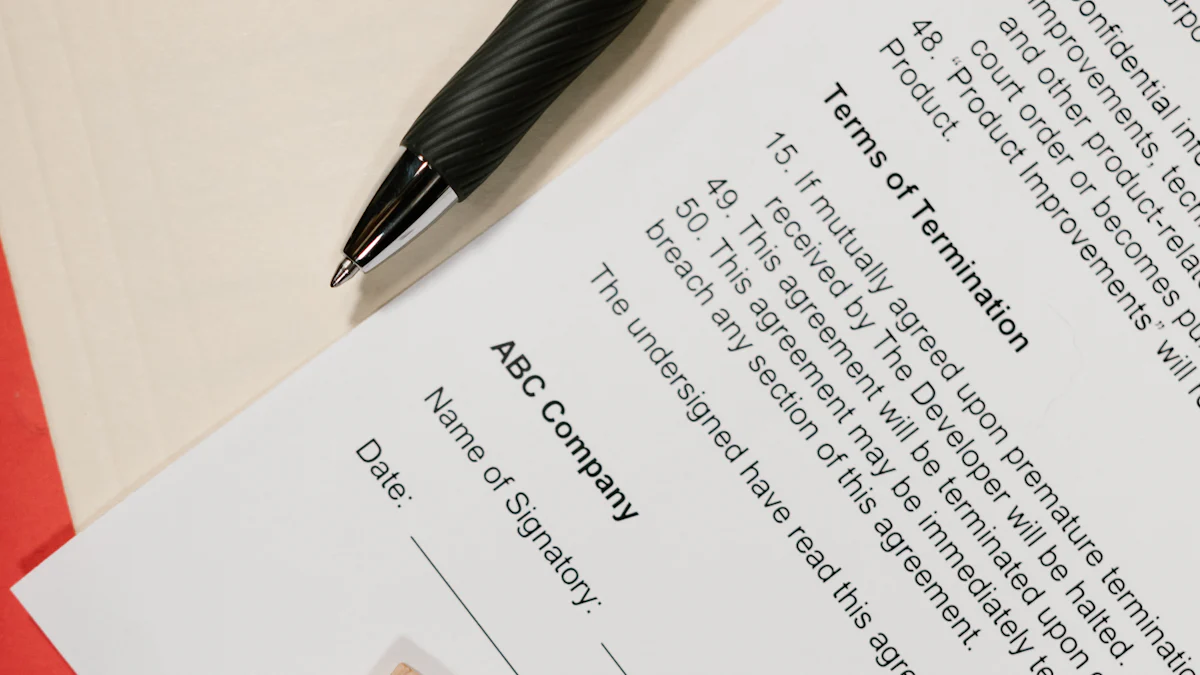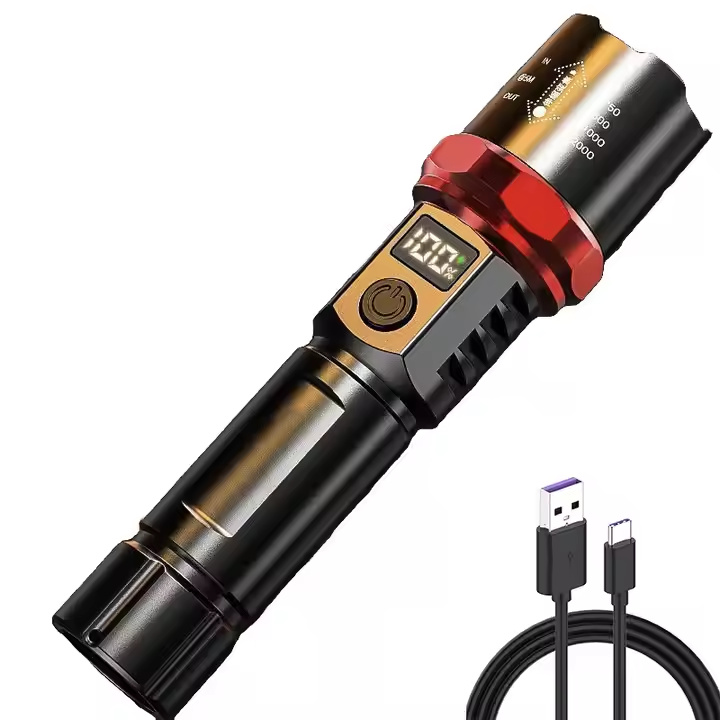How Industry Regulations Impact Flashlight Manufacturing and Shipping

Understanding how industry regulations impact flashlight manufacturing and shipping is essential for staying competitive. These regulations shape every step, from sourcing materials to delivering products. For flashlight businesses, challenges like fluctuating raw material prices and the high cost of advanced models can strain budgets.
However, opportunities also arise. For instance, integrating smart features into flashlights appeals to tech-savvy consumers and expands market potential. By navigating these regulations effectively, you can turn challenges into growth opportunities while ensuring compliance and innovation.
Adapting to regulations not only ensures legal compliance but also positions your business for long-term success.
Key Takeaways
Knowing the rules is important for flashlight makers. These rules guide how materials are used and shipped.
Following environmental rules can make your brand look better. Using green materials attracts buyers and follows the law.
Safety rules like UL and CE make products safe to use. Meeting these rules earns customer trust and beats competitors.
Keeping up with rule changes is very important. Staying updated avoids fines and keeps your business running well.
Using tech tools can make following rules easier. These tools help with paperwork and checks, saving time and cutting mistakes.
Overview of Current Supply Chain Regulations
Understanding current supply chain regulations is crucial for flashlight manufacturers and distributors. These regulations influence how you source materials, design products, and ship them to customers. Let’s explore three key areas of regulation that directly affect your operations.
Environmental Regulations
Environmental regulations aim to reduce the environmental impact of manufacturing and shipping processes. For flashlight manufacturers, this often involves adhering to sustainability initiatives and federal regulation changes. You may need to source eco-friendly materials or adopt energy-efficient production methods. Regulations like RoHS restrict hazardous substances in electronic components, ensuring your products meet environmental standards.
Shipping regulations also play a role. For example, IMO 2020 mandates a significant reduction in sulfur emissions from ships, which impacts transportation costs and logistics planning. By complying with these rules, you contribute to sustainability while avoiding penalties.
Safety Standards
Safety standards ensure your flashlights meet performance and safety criteria. These standards guide your design and testing processes, helping you create reliable products. Key certifications include:
Safety Standard | Description |
|---|---|
UL Certification | Tests products for public safety. Products must pass all UL requirements to bear the UL Mark. |
IECEx Certification | Ensures compliance with international safety standards in hazardous areas. |
ATEX Certification | Specifies equipment allowed in explosive atmospheres under EU directives. |
RoHS | Restricts hazardous substances in electrical and electronic equipment. |
CE Marking | Certifies compliance with EU safety, health, or environmental requirements. |
Additionally, standards like ANSI/NEMA FL 1 define flashlight performance and testing methods. These guidelines provide a consistent platform for manufacturers, making it easier for consumers to compare products.
Transportation and Shipping Regulations
Transportation and shipping regulations ensure safe and efficient delivery of your products. Federal regulations often require proper documentation and compliance with packaging standards. For instance, IMO 2020 affects shipping routes and fuel costs, creating a regulatory burden for businesses. You must also consider labeling requirements to meet international shipping standards.
Adapting to these regulations helps you avoid delays and ensures your products reach customers on time. Staying informed about federal regulation changes and leveraging technology can simplify compliance.
Impacts of Supply Chain Regulations on Flashlight Manufacturing

Material Sourcing and Compliance
Supply chain regulations significantly influence how you source materials for flashlight production. As a manufacturer, you must ensure that your materials meet environmental and safety standards. For example, regulations like RoHS restrict the use of hazardous substances in electronic components. This means you need to carefully select suppliers who comply with these rules.
Sustainability plays a growing role in material sourcing. Many regulations now encourage the use of eco-friendly materials. By adopting sustainable practices, you not only meet legal requirements but also appeal to environmentally conscious consumers. This shift can enhance your brand image and open new market opportunities.
Design and Production Adjustments
Regulations often require you to adjust your flashlight designs and production processes. Safety standards, such as UL and CE certifications, dictate specific design criteria. You may need to modify your products to meet these standards, ensuring they are safe and reliable for consumers.
In the manufacturing industry, sustainability regulations also push you to adopt energy-efficient production methods. For instance, using renewable energy sources or reducing waste during production can help you comply with these rules. These adjustments may seem challenging, but they can improve your operational efficiency and reduce long-term costs.
Cost Implications for Manufacturers
Compliance with supply chain regulations can increase costs for manufacturers. Material sourcing becomes more expensive when you prioritize eco-friendly or certified materials. Design changes and production upgrades also require investment. For example, adopting new technologies to meet safety or sustainability standards can strain your budget.
However, these costs often lead to long-term benefits. By complying with regulations, you avoid penalties and build trust with your customers. In the competitive U.S. manufacturing landscape, meeting these standards can set you apart from other manufacturing companies. While the initial expenses may seem high, the long-term rewards often outweigh the costs.
Impacts of Supply Chain Regulations on Flashlight Shipping

Packaging and Labeling Standards
Packaging and labeling standards directly affect how you prepare flashlights for delivery. Regulations require you to use sustainable packaging materials that align with environmental goals. For example, many countries now mandate the use of recyclable or biodegradable materials. This shift promotes sustainability while reducing waste.
Labeling also plays a critical role. You must include clear and accurate information about the product, such as its origin, safety instructions, and compliance certifications. These details ensure that your products meet international shipping procedures. Adhering to these standards not only avoids penalties but also builds trust with your customers.
Transportation Restrictions and Documentation
Transportation restrictions often dictate how you move flashlights across borders. Regulations like IMO 2020 require you to follow strict guidelines for fuel usage and emissions. These rules aim to reduce environmental harm and improve logistics efficiency. You may need to adjust your shipping routes or choose carriers that comply with these standards.
Documentation is another key aspect. Accurate paperwork ensures smooth customs clearance and avoids delays. You must provide details about the product, its value, and its compliance with international regulations. By streamlining your procedures, you can minimize disruptions and maintain timely deliveries.
Compliance Costs in Shipping
Meeting shipping regulations comes with costs. Sustainable packaging materials and compliance with IMO standards often increase expenses. You may also need to invest in training your team to handle updated shipping procedures. These costs can strain your budget, especially for small businesses.
However, compliance offers long-term benefits. It enhances your reputation and ensures your products reach customers without legal issues. By adopting sustainable practices and efficient logistics, you can offset these costs over time. Proactive planning helps you manage expenses while staying competitive in the market.
Strategies to Adapt to Industry Regulations
Adapting to industry regulations requires a proactive approach. By staying informed, leveraging technology, and collaborating with experts, you can ensure your flashlight manufacturing and shipping processes remain compliant and efficient.
Staying Updated on Regulatory Changes
Regulations evolve frequently, and staying informed is essential. You should monitor updates related to environmental policies, safety standards, and shipping requirements. For example, changes in IMO rules can directly impact your shipping logistics and costs. Subscribing to industry newsletters or joining trade associations can help you stay ahead of these changes. Regular training sessions for your team also ensure everyone understands the latest requirements.
Extended producer responsibility (EPR) laws are another area to watch. These laws hold manufacturers accountable for the entire lifecycle of their products, including disposal. By understanding EPR requirements, you can adjust your processes to meet these obligations and avoid penalties.
Leveraging Technology for Compliance
Technology simplifies compliance with complex regulations. Tools like regulatory approval services and factory audits streamline the process. For instance, IMARC Group offers tailored services to help flashlight manufacturers navigate licensing and regulatory frameworks. Their team evaluates your specific needs and assists with obtaining permits and certifications.
The following table highlights how technology can support compliance:
Service Type | Description |
|---|---|
Regulatory Approval and Licensing | Ensures businesses meet all compliance requirements, facilitating smooth and timely market entry. |
Factory Audit Services | Offers comprehensive evaluations of industrial facility's health, efficiency, and regulatory compliance. |
Feasibility Studies | Addresses regulatory procedures, financial assistance, and necessary certifications for compliance. |
By integrating these tools into your operations, you can reduce the impact of regulatory challenges and focus on innovation.
Collaborating with Experts and Partners
Partnering with experts ensures you meet industry standards effectively. Regulatory consultants can guide you through compliance requirements, including EPR laws and IMO regulations. Collaborating with suppliers who prioritize sustainability also strengthens your manufacturing processes. For example, sourcing eco-friendly materials aligns with environmental goals and enhances your brand reputation.
Building strong relationships with logistics providers is equally important. They can help you navigate shipping restrictions and documentation requirements. By working with experienced partners, you can streamline your operations and minimize disruptions.
Adapting to regulations is not just about meeting legal requirements. It’s an opportunity to improve your processes, reduce costs, and build trust with your customers.
Regulations shape how you manufacture and ship flashlights, influencing material sourcing, design, packaging, and transportation. These rules create challenges, but they also offer opportunities to innovate and build trust with your customers. Proactive compliance ensures your business stays competitive and avoids penalties.
You can adapt by staying informed about regulatory concerns, using technology to streamline compliance, and working with experts. These strategies help you navigate the complexities of regulations while improving efficiency. By embracing these practices, you position your business for long-term success.
FAQ
What are the key environmental regulations affecting flashlight manufacturing?
Environmental regulations like RoHS restrict hazardous substances in electronic components. You must also comply with sustainability initiatives, such as using eco-friendly materials and reducing waste. These rules aim to minimize environmental harm while promoting sustainable practices in manufacturing.
How can you ensure compliance with safety standards?
You can ensure compliance by obtaining certifications like UL, CE, or ATEX. These certifications verify that your flashlights meet safety and performance criteria. Regular product testing and working with certified suppliers also help you maintain compliance with safety standards.
What are the main challenges in shipping flashlights internationally?
International shipping requires compliance with packaging, labeling, and transportation regulations. You must use sustainable materials, provide accurate documentation, and follow emission guidelines like IMO 2020. These requirements can increase costs and complicate logistics, but they ensure smooth delivery.
How does technology help with regulatory compliance?
Technology simplifies compliance by automating processes like documentation and audits. Tools for regulatory approval and factory evaluations ensure your operations meet legal requirements. These solutions save time, reduce errors, and help you focus on innovation.
Why is staying updated on regulations important?
Regulations change frequently, and staying updated helps you avoid penalties and disruptions. Monitoring updates ensures your manufacturing and shipping processes remain compliant. Subscribing to industry newsletters or consulting experts keeps you informed about new requirements.
Staying proactive with compliance ensures your business thrives in a competitive market.
See Also
Comprehensive Overview of Flashlight Production in China
Exploring Manufacturing Techniques and LED Innovations in Flashlights
2024 Overview of the Flashlight Industry in America
Assessing Flashlight Vendors: Important Factors and Current Trends
